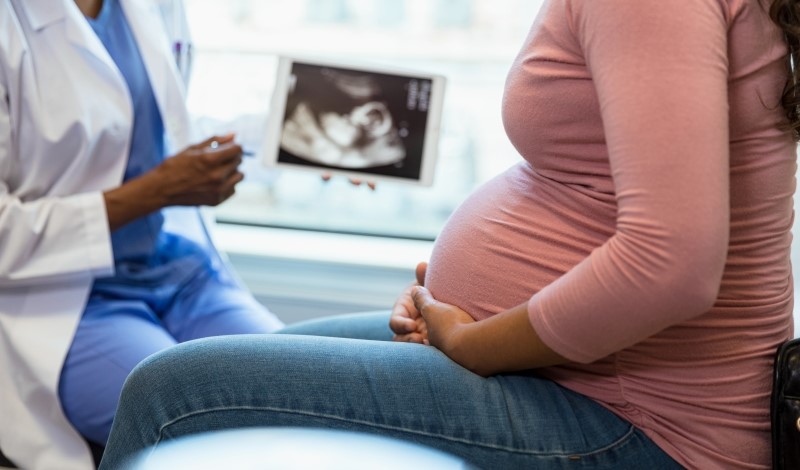
Scholars, politicians, and advocates expose maternal health care disparities and propose regulatory solutions.
Abortion restrictions correlate with worse health outcomes. Research shows that the infant mortality rate in states with the most restrictive abortion regulations increased 16 percent from 2014–2018. A recent study conducted by Johns Hopkins Bloomberg School of Public Health found that infant deaths in Texas increased by 12.8 percent after the 2021 Texas Heartbeat Act restricted abortions after six weeks.
After the U.S. Supreme Court decided Dobbs v. Jackson Women’s Health Organization, 13 additional states passed total abortion bans, and 6 others banned abortions after 15 weeks. Given past findings, scholars suspect that the United States will not see the full effect of Dobbs on reproductive health care services for years to come.
The United States also has the highest maternal mortality rate among all high-income countries–a number that continues to rise. Between 2019 and 2021, U.S. maternal mortality rates increased from 20.1 to 32.9 deaths per 100,000 live births. Rates for Black patients were 2.6 times higher than those for white patients.
High-quality pre- and post-natal care can prevent most pregnancy-related deaths. Yet 36 percent of all counties in the United States lack a hospital or birth center that offers obstetric care. Experts designate these counties as maternity care deserts (MCDs). Nearly 6 million women of childbearing age live in MCDs and are thus left with little to no access to maternal health care.
Experts expect access to maternity care to continue decreasing as providers leave states with restrictive abortion bans, withhold emergency maternal care, or transfer patients out of state for fear of prosecution.
MCDs are disproportionately located in predominantly Black, Indigenous, and rural communities. Reduced access to maternal health care further exacerbates disparities in care caused by structural socioeconomic inequalities, including decreased health insurance coverage, increased rates of mistreatment by doctors, and a lack of culturally competent care.
Midwives are one alternative to help fill gaps in the maternal health care system. Patients who use a midwife are less likely to require emergency medical intervention and typically enjoy lower cost of care. Half of states, however, and half of states restrict the scope of practice beyond what they are certified to offer.
Doulas also improve maternal and infant health outcomes by educating, supporting, and advocating for their patients. But most state Medicaid plans do not reimburse doulas, making them inaccessible to groups who would most benefit from their services.
Recently, the U.S. Department of Health and Human Services took steps toward addressing the increase of MCDs by funding efforts to increase access to care in MCDs, investing in facilities that adopt evidence-based practices to reduce negative birth outcomes, and encouraging states to extend postpartum Medicaid coverage. Although some scholars and practitioners find these actions promising, they advocate further measures to address the problem of MCDs.
In this week’s Saturday Seminar, scholars discuss the consequences of MCDs on health outcomes and propose potential regulatory solutions.
- In a March of Dimes report, Christina Brigance of the New Mexico Department of Health and coauthors highlight challenges presented by MCDs. The Brigance team recognizes that midwifery care is associated with positive birth outcomes, but that accessibility remains limited. Black women in rural areas are7 percent less likely to deliver with a licensed midwife than women in urban regions, Brigance and her coauthors note. They suggest that broadening access to midwife-led care may improve health outcomes for high-risk mothers and infants. As another solution to rural MCDs, the Brigance team proposes Medicaid reimbursement for telehealth care and increased broadband, as evidence reveals positive outcomes associated with telehealth.
- In a study in Birth analyzing all U.S. births in 2020, Maeve E. Wallace of Tulane University School of Public Health and Tropical Medicine and several coauthors found that people living in counties without access to abortion or maternity care were 10 percent more likely to experience preterm birth—the leading cause of infant mortality among Black infants—than those with greater access to reproductive health care services. Wallace and her coauthors explain that limited access to abortion care compounds other systemic barriers, worsening adverse maternal and birth outcomes. To prevent adverse outcomes, the Wallace team advocates expanding Medicaid coverage of midwives and doulas, funding state innovation in perinatal home visitation, and investing in community-based maternity services.
- In a White House report, the Biden-Harris Administration outlines key strategies to improve maternal health outcomes. The Administration explains that it aims to expand and diversify the workforce of maternal health care providers, improve data collection, and strengthen economic and social support for pregnant people. The White House presents several regulatory approaches to achieve this aim, including expanding access to programs that decrease racial and socioeconomic disparities among breastfeeding individuals, increasing the number of health workers in underserved areas, and standardizing leave recommendations for pregnancy loss and neonatal health complications for the Military Health System. Through a total of 50 actions involving twelve agencies, the White House explains that it hopes to decrease maternal mortality rates.
- In an article in the Health and Human Rights Journal, Alicia Ely Yamin of Harvard Law School discusses regulations she considers necessary for the success of an intergovernmental approach to improving maternal health. To ensure safe motherhood, Yamin advocates shifting U.S. health care financing away from the current privatized model to one of public funding, which she argues could better address MCDs and health care inequality. Yamin argues that the disconnect between data-gathering institutions and the individuals who need such data is another key issue. To solve this disconnect, Yamin urges for the creation of national vital registration systems to better assess compliance with international maternal health obligations.
- In an article in BMC Pregnancy and Childbirth, Jazmin Fontenot of March of Dimes Perinatal Data Center and several coauthors discuss a study on the disparate impacts of MCDs and discuss recommendations to alleviate adverse effects. Fontenot and her coauthors found that the mean travel distance to obstetric facilities in rural communities and MCDs is two to three times higher than the national average. The Fontenot team also discovered that American Indian and Alaska Native communities had the highest travel times and distances compared to all other predominant races and ethnicities. To close these accessibility gaps, Fontenot and coauthors argue for a series of investments into obstetric care, including increasing the obstetric workforce geographically and expanding midwifery services.
- The COVID-19 pandemic created new hospital credentialing requirements for doulas, Elizabeth Kukura of Drexel University School of Law states in an article in Washington and Lee Law Review. Kukura argues that these requirements are a poor regulatory fit because they impede patient autonomy and increase barriers to realizing the benefits of doulas for both patients and providers. Rather than limiting access to doulas, Kukura promotes including doulas in Medicaid programs and investing in developing community doula workforces. Kukura argues that these measures would make doulas more accessible to communities of color that face a higher risk of adverse health outcomes. Kukura states that advocating doula accessibility is essential in the ongoing maternal health crisis.
The Saturday Seminar is a weekly feature that aims to put into written form the kind of content that would be conveyed in a live seminar involving regulatory experts. Each week, The Regulatory Review publishes a brief overview of a selected regulatory topic and then distills recent research and scholarly writing on that topic.



